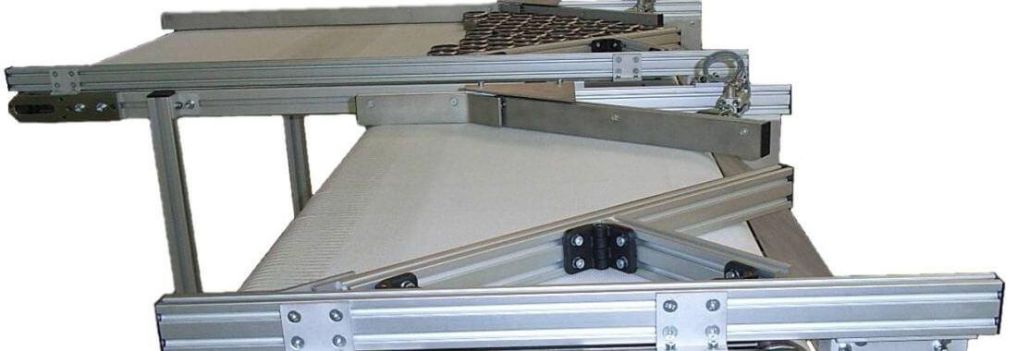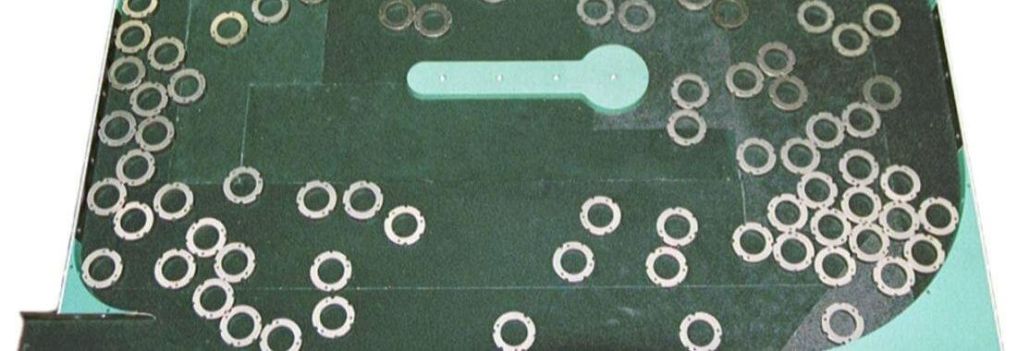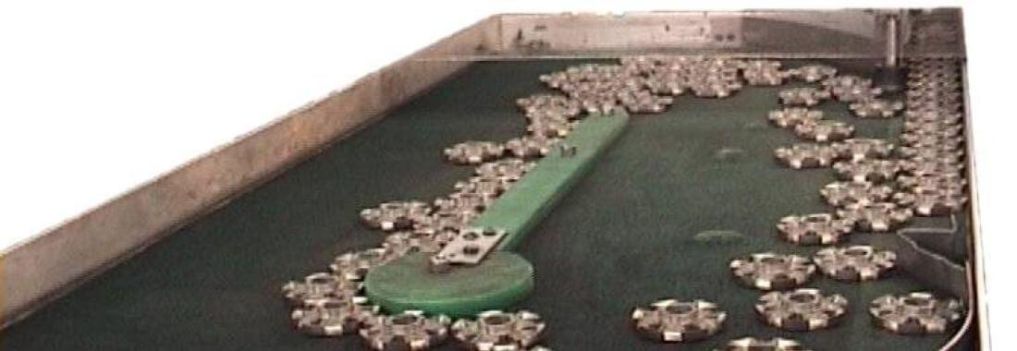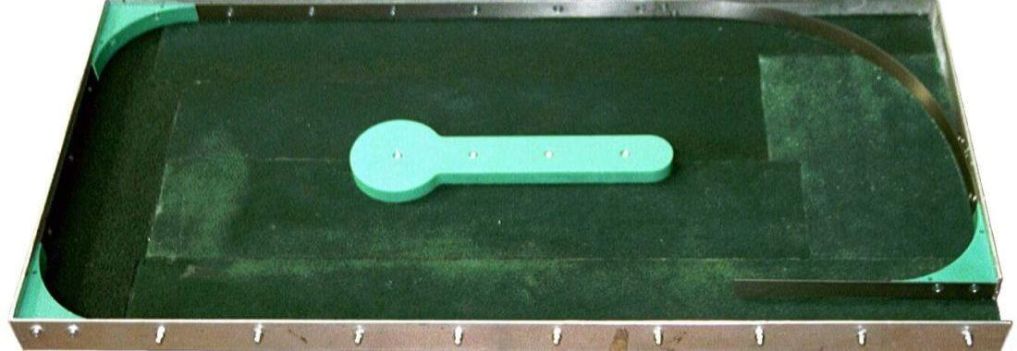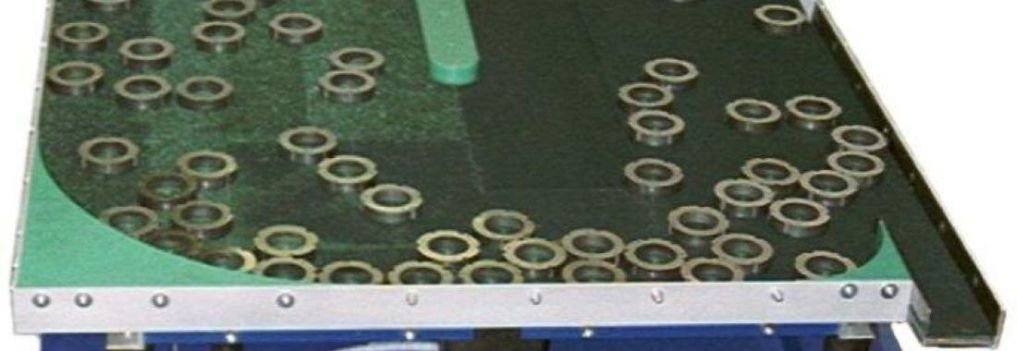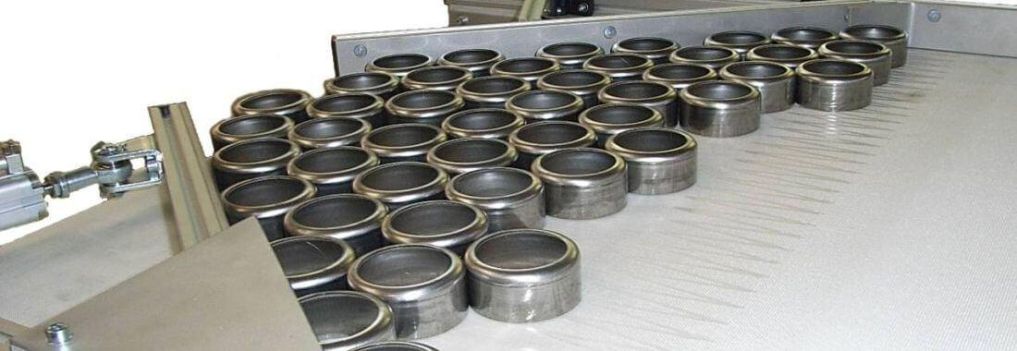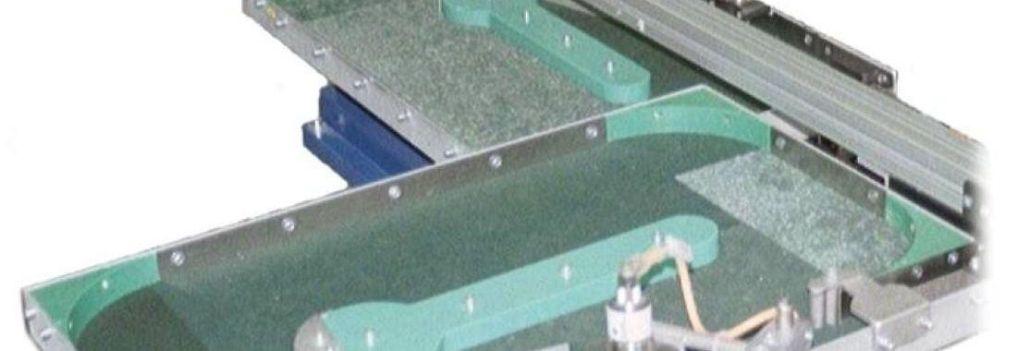Vibratory and belt storage tables
Storage tables are stocked manually with correctly positioned goods to be conveyed and are used for storing and the gentle feeding of sensitive and generally rotationally symmetrical workpieces.
We have the following storage systems in our range:
- Type VFLSP: Vibratory storage table
- Type BFLSP: Belt storage table
- Type DFLSP: Rotary disc storage table
Vibratory storage table
A Vibratory storage table essentially comprises the following components:
- Vibratory drive(s)
- Control unit
- Vibratory table with guide elements
- Coating with conveyor brush
Function:
The arrangement of the conveyor brush on the vibratory storage table causes the material being conveyed to move in circular direction along the external barrier, where it can be captured and ejected. Larger storage tables use counter-rotating drive systems.
Belt storage tables
A Belt storage table essentially comprises the following components:
- Belt drive powered by electric motor
- Conveyor belt or hinged plate belt
- Channelling structure with guide elements
Function:
-
Design with single-track conveyor belt:
In this design, a slow-moving conveyor belt ensures that the parts flow in one direction.
-
Design with counter-rotating conveyor belts:
In this version, opposing conveyor tracks with plastic or stainless steel hinged plate belts cause the parts to flow in two directions while guide elements at the end of each belt direct the workpieces to the adjacent belt running in the opposite direction.
Rotary disc storage table
A Rotary disc storage table essentially comprises the following components:
- Rotary drive powered by electric motor
- Rotating table with stainless steel support
- Channelling structure with guide elements
Function:
The arrangement of the guide elements causes the material being conveyed to move in a circular direction along the external barrier, where it can be captured and ejected.
Linear vibratory drives are used for vibratory storage tables.
Three-phase gear motors are used for belt storage tables and rotary disc storage tables.
Appropriate control units are required to regulate the linear vibratory drives. They can be used to adjust the conveying speed and in many cases have a cut-off switch activated by filling level
Conveyor brushes in different designs are used to coat the vibratory storage tables in order to influence the direction of travel of the workpieces.


